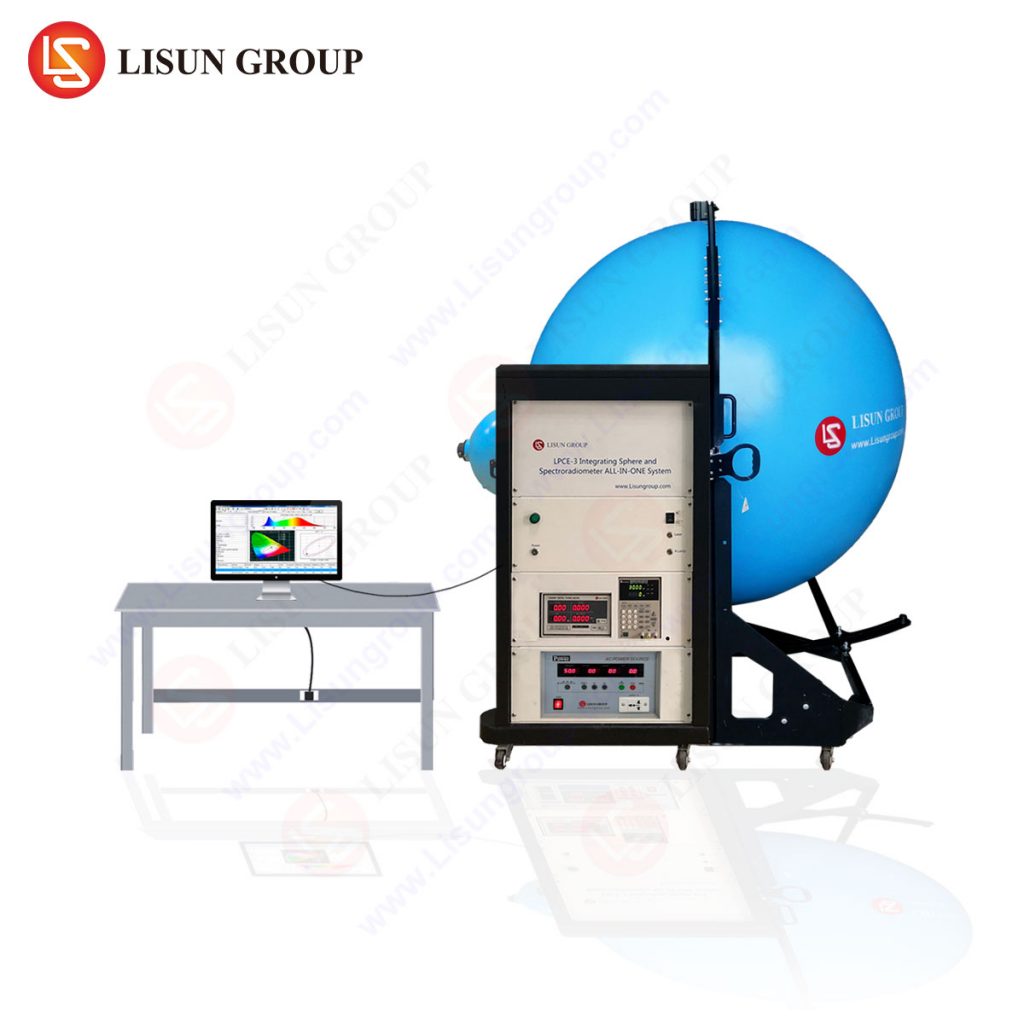An integrating sphere gathers electromagnetic radiation from a source that is typically outside the optical device for flux measurements or optical attenuations. In an integrating spheres, radiation hits the walls and experiences many diffuse reflections.
After many reflections, the radiation is very evenly distributed along the walls of the sphere. The resultant integrated level of radiation is related directly to the starting level of radiation and may be readily measured by the detector.

IS-1.5MA Integrating Sphere
The general purpose areas of LISUN are intended to be cost-effective and configurable in many ways for a range of purposes. A single sphere can perform different integration tasks, such as uniform lighting, light measurement, and reflection measurement, with an acceptable precision with a wide range of accessories available. Integrating spheres provide a simple option for the integration of light and light sphere measurements.
Theory of integrating sphere
Integrating spheres are highly diverse optical components intended to produce a balanced distribution of optical light via numerous Lambertian reflections on the sphere’s inner surface. The primary source of radiation may be placed either inside or in front of the source entry port.
In the latter scenario, the internal radiation distribution of the sphere is solely essential for the optical radiation entering the sphere. As long as we are restricted to areas that are protected by the primary source from direct irradiation and therefore lit exclusively by reflections on the opposite inner surface, the theory of an ideal sphere leads to two key conclusions:
The brightness of the sphere’s inner surface is proportional to the total radiant energy released within the sphere by a source or entering the sphere via its port of entry. The primary radiation source does not affect geometrical and directional dispersion as long as the direct lighting of the relevant site is avoided. This feature is particularly significant when an integrating sphere is employed as the optical input element of a radiation power detector.
Radiance reflected in the directional division of an area of the sphere’s inner surface protected from direct light is constant and independent of the particular place in which it happens. The exit port of the globe may therefore be used as an ideal Lambertian source. Since the optical radiation emitted by the sphere is characterized by homogeneous radiation and exit distributions, and the sphere itself is characterized by homogeneous radiation and exit distributions. This is particularly essential when a sphere is utilized as a common source of calibration.
Integrating sphere in illumination
An integrating sphere and calibrated detector configuration are appropriate for the precise measurement of the total light output of divergent beams from laser diodes, LEDs, and lensed lenses. Your readings will be insensitive to issues with the active detector area overfill. The source is on the port of 0 degrees, and the detector is placed on the dock of 90 degrees.
The north port may be utilized for wavelength measurement as a light pick-off. The detected flux is indeed a tiny fraction of the incident flux in an integrated area. This attenuation produced by light, which several times reflects before reaching the detector, makes the built in sphere suitable for measuring the power of high-performance lasers.

